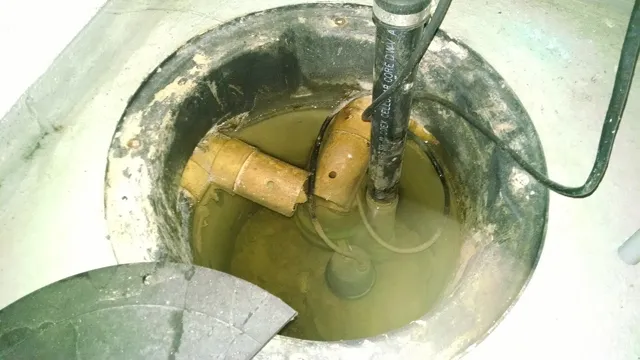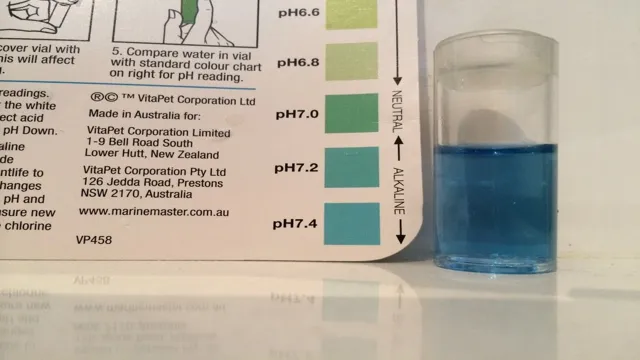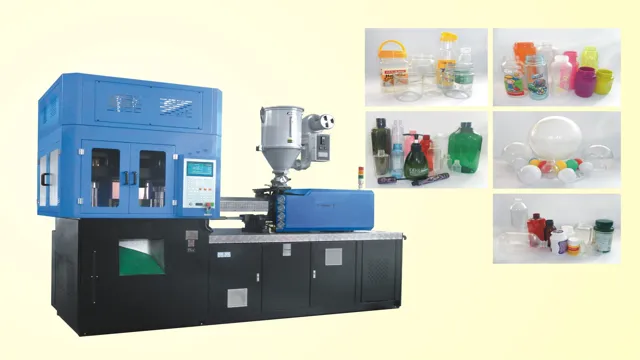How do you determine the appropriate water level for your aquarium sump? For many aquarists, this can be a daunting task that often results in frustration or worse, damage to their aquatic ecosystem. However, setting the right water level is crucial for the overall health and well-being of your aquarium. Think of your sump as the lungs of your aquarium.
It plays a vital role in filtering and maintaining the water chemistry, ensuring that your fish and corals have oxygen-rich water to live in. That’s why getting the water level right in your sump is critical. You want to ensure that the water level is not too high or too low, as this can affect the effectiveness of your sump and possibly lead to issues such as overflowing or dry running.
So, how can you determine the perfect water level for your sump? There are a few essential steps you can take to ensure you get it right. Firstly, consider the size of your aquarium and the sump capacity. It’s recommended that your sump holds at least 10% of your total aquarium volume.
Next, check the manufacturer’s instructions or consult with a professional to determine the optimal water level for your particular setup. Another crucial factor to consider is the type of sump you have. Does it have a built-in overflow box or not? If it does, you’ll want to ensure that the overflow box is working efficiently and not taking up too much space in your sump.
If it doesn’t have an overflow box, you’ll need to be more vigilant in monitoring the water level to avoid overflow. In conclusion, determining the water level for your aquarium sump doesn’t have to be a complicated process. By considering the size of your aquarium, sump capacity, manufacturer’s instructions, and sump type, you can ensure that your aquatic ecosystem remains healthy and thriving.
Remember, your aquarium’s lungs need the proper water level to function correctly, so take the time to get it right.
Why is Water Level Important?
Determining the water level for your aquarium sump is absolutely crucial for maintaining a healthy and safe environment for your aquatic pets. A sump allows for the filtration and processing of large volumes of water beneath the aquarium, and the water level needs to be regulated to prevent overflowing or running dry. There are a few easy ways to ensure that your sump’s water level stays where it needs to be.
One method is to use a water level indicator, which consists of a float valve that opens and closes as the water level changes. Another way is to simply mark the sump’s water level with a permanent marker, making it easy to see when the level is too high or too low. Regardless of which technique you use, be sure to monitor the water level in your aquarium sump on a regular basis to ensure that your aquatic pets stay healthy and happy.
Maintaining Optimal Water Quality
Maintaining optimal water quality is crucial. One of the most crucial aspects of this is water level. The level of water in a pond or aquarium can have a significant impact on the well-being of its inhabitants.
A low water level can cause stress and discomfort in fish, and it can also harm beneficial bacteria that help maintain water quality. On the other hand, too much water can lead to overflow and flooding, causing damage to equipment and potentially harming aquatic life. In addition to the physical effects, water levels can also impact water quality.
A higher water level can cause a high level of dissolved oxygen, while a lower water level can lead to decreased oxygen levels. Ultimately, it is essential to monitor and maintain a consistent water level to ensure optimal water quality and the well-being of aquatic life. (See Also: How to Make Acrylic Aquarium from Liquid: Step-by-Step Guide for DIY Enthusiasts)

Ensuring Proper Functioning of Equipment
Water level is one of the key factors in ensuring proper functioning of equipment, especially those that require water to operate. It might seem like a small detail, but even a slight deviation in water level can have a massive impact on the performance of an entire system. For example, in a boiler system, the water level needs to be monitored and maintained carefully to avoid overheating and potential catastrophic failure.
Similarly, in a cooling tower, the water level needs to be regulated to ensure that the tower is working efficiently and cooling the water to the required temperature. Failure to manage water level can have serious safety implications and can result in significant downtime, repairs, and associated costs. Regular monitoring and maintenance of water level is therefore critical for the smooth and safe operation of industrial equipment.
How to Determine Water Level
If you’re a hobbyist looking to keep a healthy aquarium, measuring water level in a sump is vital to maintaining optimal conditions for your aquatic life. Accurate water level measurements ensure efficient water flow through your filtration system, prevent potential flooding, and promote a healthy and stable aquatic environment. To determine the water level in your aquarium sump, you’ll need to locate the waterline and measure the distance from the surface to the waterline.
This can be done with a variety of tools, including a simple ruler or a specialized water level gauge. Place the measuring tool at the waterline and take a reading to determine the current water level. Regularly monitoring the water level in your sump will ensure proper filtration and prevent water damage.
With these simple steps, you’ll be able to maintain a healthy and thriving aquarium environment for your fish and other aquatic creatures.
Step 1: Locate Sump Water Line
When it comes to determining the water level in your sump pump, the first step is to locate the sump water line. This line is typically found on the outer surface of the sump pit and marks the highest point that the water level should reach. By finding this line, you can easily determine whether the water level in your sump pump is normal or too high.
Knowing the water level is essential to ensuring that your sump pump is working properly and preventing water damage to your home. Additionally, keeping an eye on the water level can help you identify any potential issues with your sump pump before they become major problems. So, next time you check on your sump pump, be sure to locate the water line first to determine the water level.
Step 2: Measure Water Depth
Determining the water level is an essential part of any water-related activity, be it fishing or boating. To measure the water depth, you can use a variety of methods, including sonar, a dipstick, or a depth finder. The most common way, however, is to use a boat hook or a marked rope to measure the distance from the bottom of the body of water to the surface.
This method is simple and effective, but it requires a bit of practice and patience. When measuring the water level, be sure to take into account any fluctuations due to tides or wind. By taking accurate measurements, you can effectively navigate and enjoy your time on the water.
Step 3: Compare to Recommended Water Level
The water level in your pool is important for a variety of reasons, and it’s essential to know how to determine it accurately. To start, you need to locate the recommended water level for your specific pool. This information can usually be found in the user manual, but if you don’t have it, you can also try contacting the manufacturer or a pool professional.
Once you have this information, it’s time to compare it to the current water level in your pool. Keep in mind that some pools may require a specific water level to function correctly or maintain proper water circulation. Ignoring recommended water level guidelines can lead to increased energy costs, water imbalances, and subpar pool performance. (See Also: How to Make an Aquarium in a Coffee Carafe: A Step-by-Step Guide)
In addition, inadequate water levels can cause pump damage or even complete system failure, leading to costly repairs. That’s why it’s crucial to know how to determine and maintain proper water levels for your pool’s specific needs.
Tips for Maintaining Water Level
Maintaining the proper water level in an aquarium sump is important for the overall health and well-being of your fish and other aquatic life. But, how do you determine the correct water level? One of the easiest ways is to use the overflow as a guide. The water level should be just below the lip of the overflow, typically about one inch below.
You can also use a water level controller or a float valve to automatically adjust the water level. It’s important to regularly check and adjust the water level, as evaporation and water changes can affect it over time. Maintaining the proper water level ensures the proper functioning of the sump, helps to maintain a stable environment for your aquatic life, and can prevent overflowing or damaging equipment.
So, make sure to keep an eye on the water level in your aquarium sump and make adjustments as needed for a healthy and happy aquatic environment.
Regular Water Changes
Regular water changes are crucial for maintaining the proper water level in your aquarium. Changing some water on a regular basis will help to prevent the accumulation of unnecessary waste, excess minerals, and harmful chemicals, which can lead to poor water quality and unhealthy living conditions for your fish. When it comes to maintaining the water level of your aquarium, consistency is key.
Consider using a small siphon or vacuum to remove about 10-20% of the water in your tank once every two weeks, if not more frequently. This will help to keep your aquarium clean, clear, and healthy for your fish. By keeping the water level and quality in check, your fish will be able to thrive and enjoy a long and healthy life in their aquatic home.
Monitor for Evaporation
If you have a swimming pool or any other water feature, you need to monitor for evaporation to ensure that the water level is maintained. Evaporation can be caused by various factors such as temperature, wind, and humidity. It is important to keep an eye on the water level and replenish it as needed to avoid any damage to the pump or filters.
One way to monitor for evaporation is to mark the pool walls or the waterline with a pencil and check it regularly. You can also install an automatic water filler that will keep the water level constant by adding water as needed. Remember that maintaining the water level is crucial for the overall health of your pool, and it is important to address any issues promptly.
By doing so, you’ll ensure that your pool is always ready for a refreshing swim whenever you are.
Conclusion
It may seem daunting at first to determine the optimal water level for your aquarium sump, but with a few simple steps, you’ll be swimming upstream. Keep in mind the importance of providing adequate space for your filter and pump, as well as ensuring proper water circulation. By taking these factors into account, you’ll be able to get a handle on the water level in no time and keep your aquatic friends happy and healthy!” (See Also: How to Acclimate Fish to Aquarium: Tips and Tricks for a Smooth Transition)
FAQs
What is an aquarium sump?
An aquarium sump is an additional tank that is placed under the main aquarium to provide extra filtration and increase water volume.
Why is it important to determine the water level in an aquarium sump?
Determining the water level in an aquarium sump is important to ensure proper functioning of equipment, such as protein skimmers and return pumps, and to prevent overflow or dry running.
How can I measure the water level in my aquarium sump?
You can measure the water level in your aquarium sump using a float valve, a water level sensor, or a simple water level indicator like a ruler or dipstick.
What should the ideal water level be in an aquarium sump?
The ideal water level in an aquarium sump depends on the specific equipment being used, but it should generally be kept between the minimum and maximum fill lines indicated by the manufacturer.
What should I do if the water level in my aquarium sump is too high or too low?
If the water level in your aquarium sump is too high, you can adjust the height of the overflow or install a secondary overflow to increase drainage. If the water level is too low, you can raise the return pump, adjust the baffles, or add more water to the sump.
What are some common problems associated with an incorrect water level in an aquarium sump?
Common problems associated with an incorrect water level in an aquarium sump include overflow or flooding, air bubbles or noise in the return line, and inadequate filtration or water turnover.
How frequently should I check and adjust the water level in my aquarium sump?
It is recommended to check and adjust the water level in your aquarium sump on a daily basis, or at least once a week, to ensure proper functioning of equipment and prevent any potential issues.







